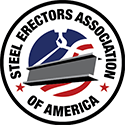There are several simple actions you should implement into your health and safety program. Not only will your employees be more aware of their safety and the safety of those around them, but you will avoid heartache and cost down the road because your company will be prepared for any OSHA visit.
Summary of 7 Best Practices
BEST PRACTICES #1 Regulatory Compliance As the OSHA inspector conducts the investigation, he or she is looking for violations. If the inspector finds one, the scope of the inspection can be expanded. It’s like tugging on a loose yarn in a sweater. Once you find one and start pulling, you never know what will be left once you are done. If non-compliance issues are not noted, the inspector will not issue a citation. It’s as simple as that. Stay up-to-date on OSHA regulatory changes and make sure that your Health and Safety policy reflects those changes. For example, a current hot topic in the construction industry right now is the updated silica standard. Does your policy reflect the new lowered permissible exposure limits and Table 1 Exposure Controls? Have you sent all of your employees through Silica Awareness training? #2 Safety and Health Policy/Program Do you have a written Safety and Health Policy/Program in place? If not, this one may well be at the top of your lists for action items this year. A comprehensive written Safety Policy will outline all the possible hazards that your employees are exposed to and how to “fix” them. It is also an eligibility requirement for receiving the “good-faith” penalty reduction if your company is cited by OSHA. #3 Training Make sure that your employees have training for all the tasks that they must perform. Training can be delivered in a multitude of ways, but one thing that OSHA makes very clear is that the worker must be trained in a manner that they can understand. If your employees are not English speakers it will not do you any good to sit them down in front of an electrical safety video that’s delivered in English. OSHA says that if a reasonable person would conclude that necessary training had not been conveyed to employees in a manner they were capable of understanding, then the violation may be cited as serious. The best place to start training would be instruction on what’s inside your Safety Policy. This can be done during “Tool Box Talks.” Just make sure that your employees mark a sign-in sheet for the talk. If it isn’t documented, it didn’t happen, which leads to the topic of training records. #4 Training Records In an OSHA investigation, one of the first things the inspector asks for is training records for the employees. This process can go one of two ways, very good or very bad. Companies that have experienced a good process did the following.
Those who had a bad experience with an OSHA investigation:
#5 Inspections Site inspections are vital to auditing the effectiveness of your company’s Health and Safety program and regulatory compliance. The best inspections involve the Site Safety Manager, Supervisor, and employees doing the work. If done correctly, inspections can serve as a tool to train the employees doing the inspection as to what they should be looking for. OSHA clearly spells the requirement of site inspections under Subpart C 1926.20(b)(2), which states, “Such programs shall provide for frequent and regular inspections of the jobsites, materials, and equipment to be made by competent persons designated by the employers.” #6 Accountability Employees will break the rules. When they do, you need to document the disciplinary action and/or retraining that was conducted. The records of discipline and or retraining for not adhering to the company policy will show OSHA that your company takes safety very seriously and is not just paying lip service to it. #7 Train Employees on their Rights Employees have certain rights when it comes to interviews with OSHA inspectors. A great summary of these rights can be found online, at the link below. At the very least, make employee rights as they pertain to OSHA inspections a topic for a Tool Box Talk at least annually. If your company can put these little actions into practice on a consistent basis it will provide for not only a safer company but also a more prepared company for the day an accident happens. RESOURCES Employee Rights During an OSHA Inspection Top 10 Citations from OSHA Inspections & How to Avoid Them Recommended Practices for Safety and Health Programs Help educate others and prevent injuries This Safety Flash was contributed by Bryan McClure, MSC Safety Solutions, in cooperation with SEAA's Safety Committee. It is designed to keep members informed about ongoing safety issues and to provide suggestions for reducing risk. Best practices are gathered from a variety of sources. They may be more or less stringent than individual corporate policies, and are not intended to be an official recommendation from SEAA. Always get approval and direction from your company officers on any new practice or procedure as these best practices may not work for all situations. Everyone benefits when a worker avoids injury. Submit your ideas for Safety Flash to [email protected]. Comments are closed.
|



 RSS Feed
RSS Feed
